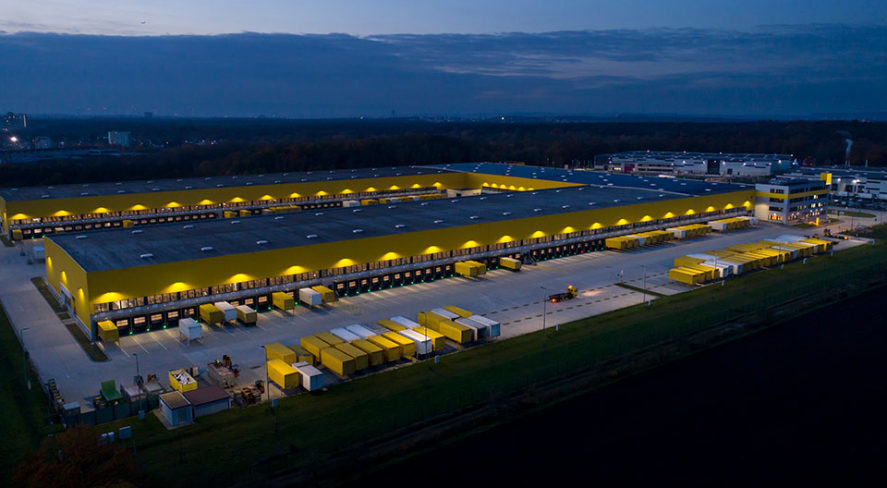Why Your AI Application Needs Better Lighting


There is no question that artificial intelligence (AI) is on the rise. In 2018, the U.S. National Defense Strategy identified AI as one of the key technological advancements that will “ensure the United States will be able to fight and win the wars of the future.” This reflects the explicit, executive objective to invest in AI as a national security interest – though shareholders across all sectors of the economy are cashing in on AI’s potential.
With this sentiment in mind, the security industry has followed suit and embraced the benefits of AI. In fact, multiple sources estimate that by 2024, AI will exceed $35 billion in security market alone. This reflects an industry-wide investment in the value proposition of AI.
This also tells us, without a doubt, that AI is here to stay.
AI Meets Video
When it comes to security, AI is most often associated with video surveillance. Advanced video analytics, which combine machine learning and high-definition camera technology, are able to track objects, identify intruders, collect traffic information, monitor machinery conditions, inform deterrent procedures and even autonomously mitigate threats in real time; however, there is one element of AI-enabled surveillance solutions that is often overlooked.
One of the greatest challenges for all security cameras is capturing usable video in low-light scenarios. It’s a simple fact: Without light, there is no clear video. Without a lighting source, even high-definition cameras can only capture dark, grainy footage. Not only is this kind of video useless to security personnel, but it is similarly rendered ineffective for analytics.
To combat this, external illuminators integrated into surveillance architecture are helping ensure industry-leading cameras can collect high-quality footage, optimized for the performance of AI.
How Illumination Enhances Surveillance and AI
When it comes to external lighting, there are a few ways to ensure video analytics are working with the best images possible. External infrared (IR) illuminators optimize camera performance by expanding a camera’s video capture and coverage abilities. While a standard day/night camera with built-in IR LEDs has a detection range of about 150 feet, mounting an independent long-range IR illuminator next to a video camera increases the camera’s detection range to over 900 feet.
IR illumination typically ranges from 700 nanometers to 1,000 nanometers in the electromagnetic spectrum. By using IR light, optical cameras produce images even in low-light scenarios and even in darkness. Consequently, the use of IR devices illuminates scenes, allowing cameras to capture greater scene detail. The enhanced image clarity results in higher-performing video analytics. By implementing external IR illuminators with surveillance cameras, users can expect to receive more precise alerts for intrusion, loitering, object detection and other video analytics. Another key benefit of IR is that this light is invisible to the human eye. As such, IR illuminators avoid attracting unwanted attention to a security camera, perfect for more covert surveillance applications.
On the other hand, integrators can choose from a variety of white light illuminators with different light emission ranges in order to accommodate a camera lens’ particular field-of-view (FOV), in order to deliver an evenly lit visual field for video analytics applications at every distance. While some cameras come equipped with their own lights, built-in illuminators typically only cover a 30-degree FOV, even though a camera’s widest FOV is 90 degrees. This not only creates “hot spots” in the middle of the camera view but can also “white out” the rest of the image.
White lights also enhance video capture for operations where full color video is essential – when using facial recognition analytics, for example, or when deploying object recognition software where a security officer might need to identify objects based on their color – in dark conditions, whereas sensors using IR illumination of thermal technology can only provide black and white images. Furthermore, because of their low running cost and comparably longer lifespan, they are saving end users thousands of dollars a year in energy costs, while also enhancing image quality to optimize AI performance.
At the end of the day, both IR and white light external illuminators are optimizing surveillance cameras’ detection capabilities, which is fundamental to the performance of analytics. Indeed, without proper illumination that allows high-definition sensors to collect detailed visual data, AI-enhanced video surveillance applications could not do their job at all.
The views and opinions expressed in guest posts and/or profiles are those of the authors or sources and do not necessarily reflect the official policy or position of the Security Industry Association (SIA).
